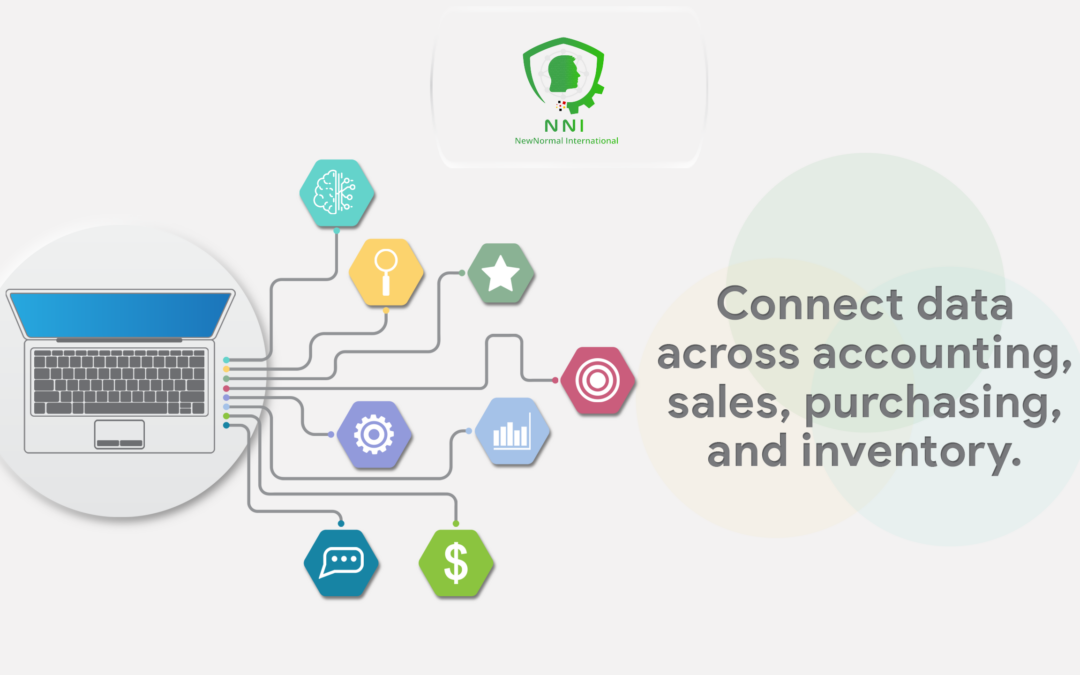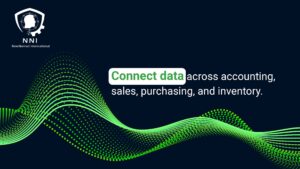Enhancing Business Operations through Unified Data Management
In today’s data-driven business environment, the capability to Data Connectivity in Business Functions is crucial for achieving comprehensive insights and operational efficiency. This interconnected approach to data management allows businesses to break down silos, streamline processes, and enhance decision-making. This article explores the benefits of integrating data across these core business functions and how it contributes to overall business success.
Benefits of Integrated Data Management
Forget the discordant jumble of siloed spreadsheets, each instrument playing a different tune in the dark. Integrated data management transcends mere file transfers; it’s the maestro’s baton conducting a captivating concerto of insights where accounting, sales, purchasing, and inventory harmonize in a symphony of operational awareness. Imagine not just managing data, but orchestrating a unified chorus of information, revealing real-time melodies of financial performance, sales trends, procurement needs, and inventory levels with breathtaking clarity. This transformative approach empowers you to:
1. Compose a Financial Rhapsody of Informed Decisions: Blindly navigating financial storms becomes a distant memory. Integrated data becomes your crystal-clear score sheet, revealing real-time profitability, resource allocation, and potential cost drivers. This financial rhapsody empowers you to make confident decisions about pricing, investment, and budgeting, ensuring every note resonates with optimal financial health.
2. Dance with Sales Trends in a Mesmerizing Waltz: Lagging sales reports are clumsy minuets in the competitive ballroom. Integrated data becomes your agile dance partner, revealing customer preferences, market shifts, and emerging trends in real-time. This captivating waltz allows you to adapt your marketing strategies, adjust product offerings, and outmaneuver rivals with the grace of a seasoned entrepreneur.
3. Anticipate Procurement Needs with a Preemptive Pirouette: Stockouts are jarring off-key notes in the operational symphony. Integrated data becomes your foresightful choreographer, predicting inventory levels, analyzing consumption patterns, and anticipating procurement needs with pinpoint accuracy. This preemptive pirouette optimizes stock levels, minimizes waste, and ensures you always have the resources to keep your business dancing.
4. Reduce Forecasting Fumbles with a Harmonious Chorus: Inaccurate forecasts are discordant stumbles in the growth concerto. Integrated data becomes your virtuoso chorus, harmonizing disparate information to predict future performance, demand, and resource requirements with unrivaled precision. This harmonious chorus fuels efficient budgeting, mitigates risk, and empowers you to confidently chart your course towards enduring success.
5. Secure a Competitive Advantage in the Marketplace of Agility: While others struggle with fragmented data, your organization operates with the grace of a seamlessly connected ensemble. This grants you a significant competitive edge, enabling you to react to market shifts with lightning speed, adapt strategies with unwavering agility, and establish yourself as the conductor of operational excellence.
6. Build a Future-Ready Orchestra and Maestro Continuous Innovation: Investing in robust data integration solutions and fostering a culture of data-driven decision-making future-proofs your organization. You become adept at embracing new technologies, streamlining processes, and ensuring long-term viability through the captivating power of continuous data-driven innovation.
Beyond Silo Symphonies: A Foundation for Captivating Insights and Enduring Success:
By embracing integrated data management and adopting a transformative approach, organizations unlock the true potential for achieving captivating insights, a future-ready orchestra, and enduring success. This empowers them to compose a financial rhapsody of informed decisions, dance with sales trends in a mesmerizing waltz, anticipate procurement needs with a preemptive pirouette, reduce forecasting fumbles with a harmonious chorus, secure a competitive advantage, and build a future-ready orchestra, ultimately building a future where every data point whispers a captivating note in the global symphony of enduring success.
Embrace the power of integrated data management and embark on a transformative journey towards a future where your operations flow with the rhythm of seamless information, your decisions resonate with unwavering conviction, and your success is a testament to the unparalleled power of conducting a captivating concerto of integrated data. By investing in expert solutions, fostering a culture of data awareness within your organization, and empowering your teams to leverage integrated insights effectively, you can unlock the full potential of your operational intelligence and build a future where every data point is a breathtaking note in the orchestra of enduring success.
Change Management for Data Integration
Successfully integrating data across different business functions requires a strategic approach to change management. This process involves evaluating existing data systems, identifying integration points, and implementing new technologies or platforms that facilitate seamless data flow. Change management ensures that all stakeholders are aligned with the new system and that the transition to integrated data management is smooth and effective.
Executive Coaching for Leading Data-Driven Organizations
Leadership plays a vital role in driving the adoption of integrated data management. Executive coaching can equip leaders with the skills necessary to manage data-driven transformations, interpret integrated data for strategic planning, and lead teams in a data-centric environment. Coaching focuses on developing analytical skills, strategic vision, and the ability to leverage data for business growth.
Effective Communication in Data Integration Initiatives
Effective communication is key to the successful implementation of data integration initiatives. It involves clearly conveying the benefits and processes of data integration to all team members, ensuring they understand how unified data management impacts their roles and the organization’s goals. Effective communication fosters a culture of data literacy and collaboration, essential for leveraging integrated data insights.
Leveraging Technology for Seamless Data Connectivity
Advanced technology, particularly in cloud computing and Generative Artificial Intelligence (AI), plays a significant role in enabling data connectivity across various business functions. Cloud-based platforms can integrate data from different sources, providing a unified view accessible from anywhere. AI and analytics tools can further analyze this integrated data, offering predictive insights and aiding in proactive decision-making.
Conclusion Data Connectivity in Business Functions
In conclusion, connecting data across accounting, sales, purchasing, and inventory is essential for businesses seeking to enhance their operational efficiency and strategic decision-making. This integrated approach to data management offers a comprehensive view of business operations, enabling better forecasting, planning, and resource optimization. By prioritizing data connectivity, businesses can unlock powerful insights, drive innovation, and achieve sustainable success in a competitive marketplace.
#DataIntegration, #BusinessIntelligence, #OperationalEfficiency, #DataDrivenDecisionMaking, #UnifiedDataManagement























